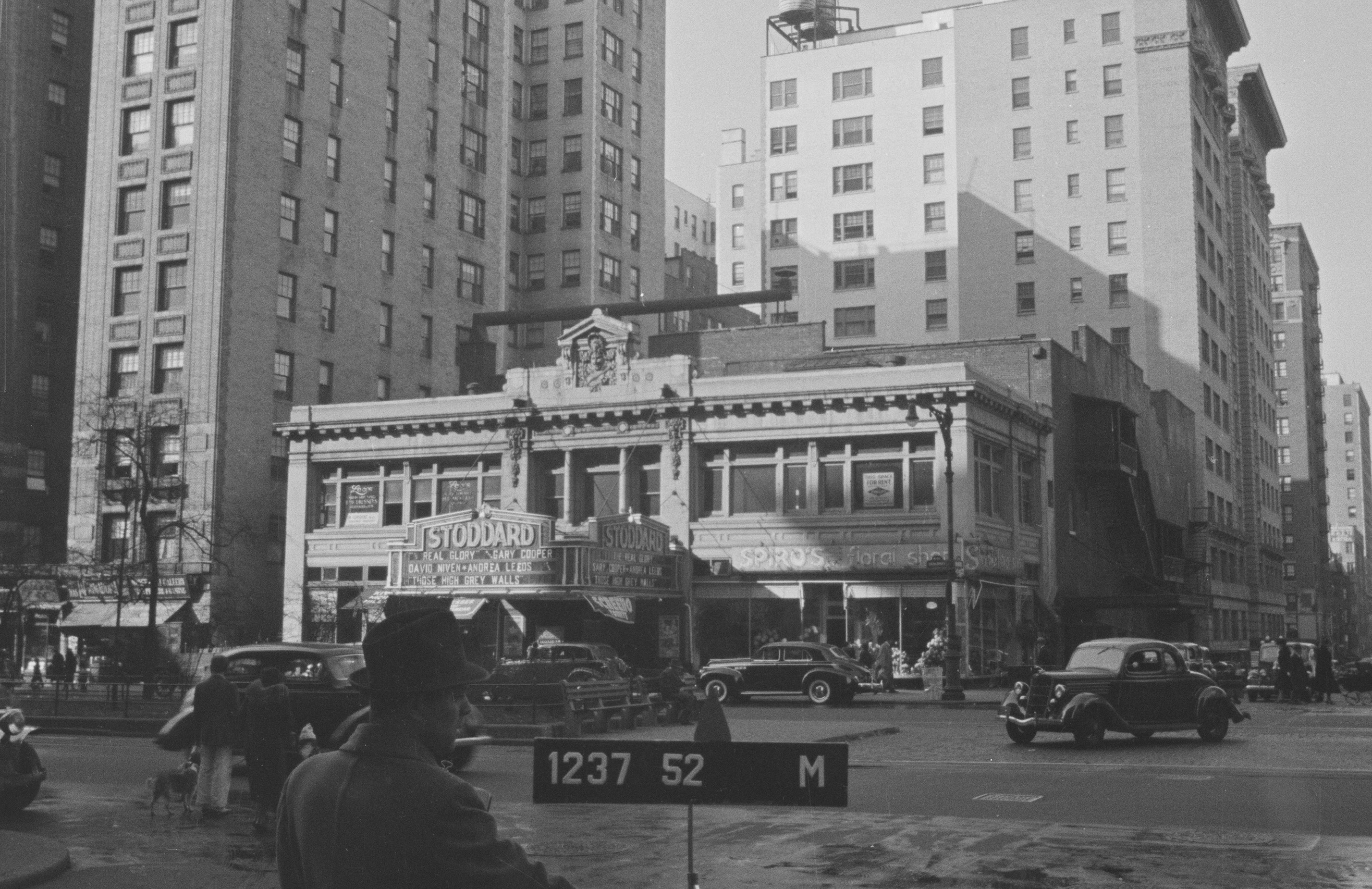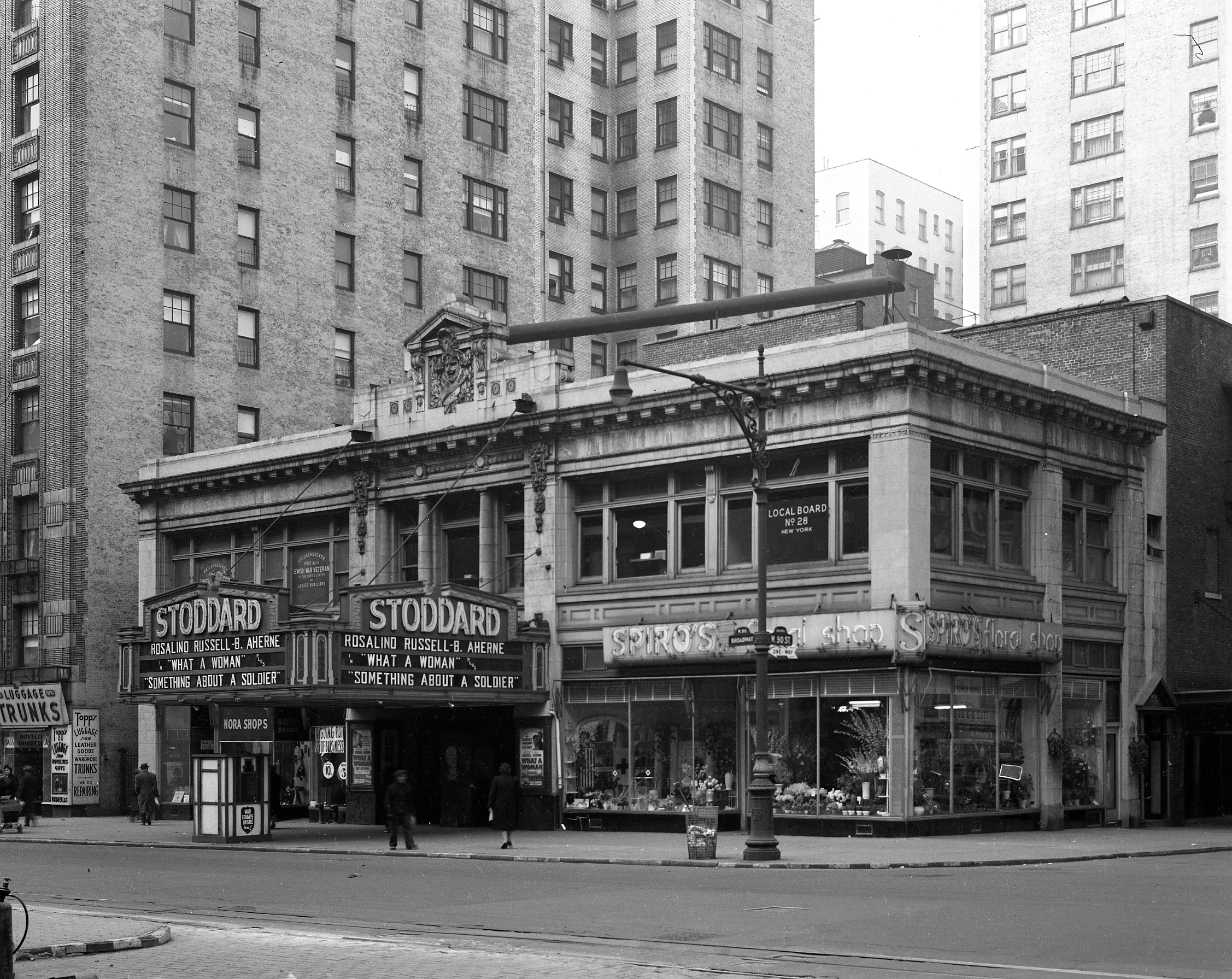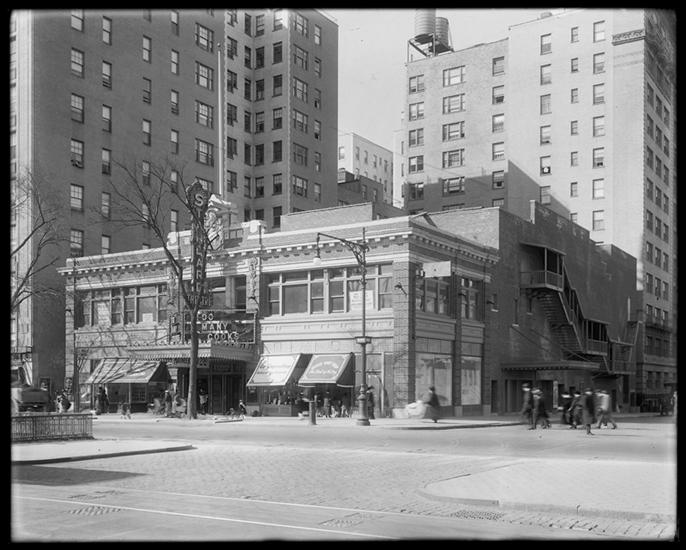
The Stoddard Theatre
by Tom Miller
Residents of the Upper West Side enjoyed its wide avenues, improved transportation, and modern apartments and homes in the first decade of the 20th century. But an evening in the theater required, for some, a trip of 50 blocks or more to the entertainment district. John Cort saw an opportunity in that inconvenience.
Cort had begun his career as half of the comedy act Cort and Murphy. He left New York to manage a theater in Illinois; then went further west to rescue the struggling Standard Theatre in Seattle. He turned it into that city’s leading theater. By 1903 his Northwestern Theatrical Association operated 37 theaters.
Now, in 1914, he looked to bring theater to the Upper West Side. It was undoubtedly no coincidence that he would name his new enterprise The Standard Theatre. Cort commissioned architect Thomas Lamb, best known for his theater projects, to design the structure on Broadway at 90th Street. On September 5, 1914, The Sun described the completed building. “The exterior of the building is of brick with ornamental terra cotta cornices and ornamental pediment over the main entrance.” Patrons entered the lobby and ticket office from Broadway; although a carriage entrance was located on the 90th Street side.
New York artist J. Alden Twachtman, who would later be represented in the Metropolitan Museum of Art, painted six panels in the lobby. “These show Venetian scenes of the seventeenth century,” wrote The Sun. The ceiling here was of Circassian walnut, and the upper walls were clad in Caen stone–a creamy colored limestone popular as a stand-in for marble.
New York artist J. Alden Twachtman, who would later be represented in the Metropolitan Museum of Art, painted six panels in the lobby.
The 1,493-seat auditorium was decorated in light gray touched in gold. A mural over the proscenium depicted “The Triumph of Dramatic Art.”
John Cort did not intend for his new theater to compete with those downtown. Instead, successful productions from the theater district would be re-staged here when they closed. “‘Popular prices will prevail,’ is an alluring slogan of the new temple,” suggested The Sun.
The Standard Theatre opened on September 5 with Kitty MacKay. The following morning The Sun wrote “John Cort has added another beautiful playhouse to New York’s already long list. The review said that it “seems–to judge from the size of the audience last night–to fill the needs of the neighborhood.”
It was not stage drama that drew throngs to the theater on Christmas Day that year. The Volunteers of America used The Standard as a gift-giving depot, distributing 1,000 dolls to little girls in the neighborhood.
Upper West Side residents enjoyed first-class productions at The Standard. For instance, on June 5, 1915, a week-long staging of The Chocolate Soldier, the musical version of Bernard Shaw’s Arms and the Man, opened. And on Sunday evenings, the New York Orchestral Society gave concerts here.
In the meantime, Thomas Lamb had designed the building to include retail stores along the street floor. In March 1916, Adler’s Waist Shops signed a lease. The waist, or shirtwaist, was the most popular women’s garment of the day.
In 1919 motion pictures were added to the live entertainment here. About two years before John Cort’s death in 1929, his son Harry Lindsey Cort, came to New York to manage The Standard Theatre. The younger Cort was also a producer and musical comedy writer. He collaborated with George E. Stoddard, writing comedies like The Elopers, Listen Lester, Just a Minute, Jim Jam Jems, and China Rose, all of which were produced at The Standard.
Harry Lindsey Cort died in his sleep of a heart attack on May 6, 1937, at the age of 47. The theater had, by now, been renamed The Stoddard Theatre after his partner.
Earlier that year, the Stoddard Theatre had been the scene of a disturbing incident. Labor unions in the 1930s regularly resorted to violent and irresponsible methods to fight management. On February 27, 1937, the 1,100 patrons watching a motion picture were victims of what was essentially domestic terrorism. The following day The New York Times reported, “Six persons were injured when a stench and tear-gas bomb, fashioned from a glass receptacle, exploded in the center of the right tier of orchestra seats at the Stoddard Theatre…Fragments of the glass container were scattered in the air, cutting persons in the vicinity about the legs.” Other patrons complained of eye irritation from the gas.
In 1933 Adolph Hitler was elected Chancellor of Germany. His party’s radical and racist views prompted efforts by some for religious and racial harmony. On January 30, 1940, the Stoddard Theatre was the scene of a program of documentary films “intended to promote inter-faith amity,” according to its organizers. It was part of the New York Round Table of the National Conference of Christians and Jews, and about 800 people attended the showings.
The New York Times reported, “Six persons were injured when a stench and tear-gas bomb, fashioned from a glass receptacle, exploded in the center of the right tier of orchestra seats at the Stoddard Theatre…Fragments of the glass container were scattered in the air, cutting persons in the vicinity about the legs.”
By now, meeting rooms on the second floor were available for rent. The Knickerbocker Post No. 111 met here on the first and third Tuesday of every month in 1944.
In 1952 the neighborhood was experiencing a terrifying wave of robberies, muggings, and rapes. In response, the police department assigned extra patrolmen to street duty and established a night detail of detectives in unmarked police cars. The New York Times reported, “And as bait for the stepped-up drive, attractive police-women in civilian finery were shifted from routine tasks.”
Despite the increased police presence, armed robbers attacked the Stoddard Theatre around 11:20 on the night of September 17. The manager was tied up, and $400 was taken from the safe.
At the time of the heist, the days of the Stoddard Theatre were numbered. Around 1956 the last motion picture was screened, and the lobby and auditorium were gutted. The ground floor was converted into a grocery, the Garden Market.
Reminiscent of the 1952 crime spree, an armed gunman terrorized Broadway on July 24, 1976, when he robbed three stores within four hours. At 8:15 that morning, he stole $500 from a dairy at Broadway and 72nd Street; then around 8:45, he hit the butcher shop at No. 2446 Broadway, taking $60; and finally held up the Garden Market at noon, getting away with $500.
The theater-turned-grocery store survived until 1985. It was demolished to make way for a 22-story apartment building designed by Philip Birnbaum & Associates.
Tom Miller is a social historian and blogger at daytoninmanhattan.blogspot.com
BUILDING DATABASE
Keep Exploring
Be a part of history!
Think Local First to support the businesses at 2433 Broadway aka 250 West 90th Street:




